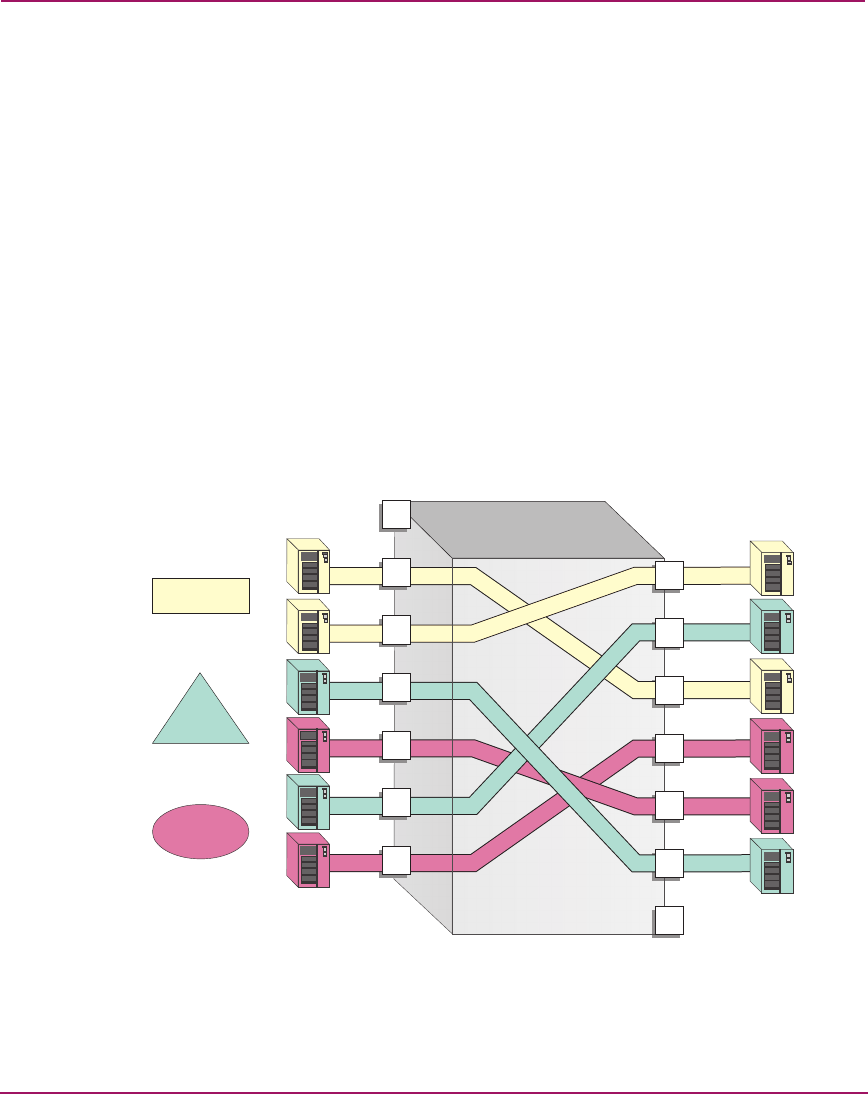FW V06.XX/HAFM SW V08.02.00 HP StorageWorks SAN High Availability Planning Guide (AA-RS2DD-TE, July 2004)
Table Of Contents
- SAN HA Planning Guide
- Contents
- About this Guide
- Introduction to HP Fibre Channel Products
- Product Management
- Planning Considerations for Fibre Channel Topologies
- Fibre Channel Topologies
- Planning for Point-to-Point Connectivity
- Characteristics of Arbitrated Loop Operation
- Planning for Private Arbitrated Loop Connectivity
- Planning for Fabric-Attached Loop Connectivity
- Planning for Multi-Switch Fabric Support
- Fabric Topologies
- Planning a Fibre Channel Fabric Topology
- Fabric Topology Design Considerations
- FICON Cascading
- Physical Planning Considerations
- Port Connectivity and Fiber-Optic Cabling
- HAFM Appliance, LAN, and Remote Access Support
- Inband Management Access (Optional)
- Security Provisions
- Optional Features
- Configuration Planning Tasks
- Task 1: Prepare a Site Plan
- Task 2: Plan Fibre Channel Cable Routing
- Task 3: Consider Interoperability with Fabric Elements and End Devices
- Task 4: Plan Console Management Support
- Task 5: Plan Ethernet Access
- Task 6: Plan Network Addresses
- Task 7: Plan SNMP Support (Optional)
- Task 8: Plan E-Mail Notification (Optional)
- Task 9: Establish Product and HAFM Appliance Security Measures
- Task 10: Plan Phone Connections
- Task 11: Diagram the Planned Configuration
- Task 12: Assign Port Names and Nicknames
- Task 13: Complete the Planning Worksheet
- Task 14: Plan AC Power
- Task 15: Plan a Multi-Switch Fabric (Optional)
- Task 16: Plan Zone Sets for Multiple Products (Optional)
- Index

Physical Planning Considerations
154 SAN High Availability Planning Guide
4. Click OK to save the path configuration and close the dialog box.
Activating a preferred path can result in receipt of out-of-order frames (especially
in FICON environments) if the path differs from the current path, if input and
output (I/O) are active from the source port, and if congestion is present on the
current path.
To avoid problems in FICON environments, vary associated channel path
identifiers (CHPIDs) temporarily offline, configure the preferred path, and vary
the CHPIDs back online.
Zoning
Directors and switches support a user configuration that partitions attached
devices into restricted-access groups called zones. Devices in the same zone can
recognize and communicate with each other through switched port-to-port
connections. Devices in separate zones cannot recognize name server or route
table information and therefore cannot communicate with each other. Figure 60
illustrates a Director 2/64 with three zones (four devices per zone).
Figure 60: Product Zoning
Zoning is enabled and enforced by one of the following processes:
Intrepid 6064
Director
ZONE 1
ZONE 3
ZONE 2










